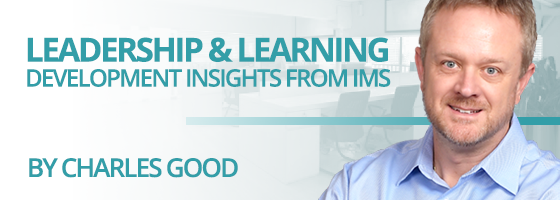Want to know what holds most leaders and companies back? It’s not chaos. It’s waiting for the chaos and uncertainty to clear. For decades, leaders were taught to stick with the crowd, trust detailed plans, and rely on predictions. But here’s the uncomfortable truth, the most resilient and market-beating organizations aren’t the ones who crave certainty or chase predictions. They’re the ones who boldly run toward the unknown, adapt in real time, and outpace their paralyzed, “careful” rivals. Need proof? Let’s explore a couple of examples of what radical uncertainty looks like in action and learn what agile leaders know that others don’t.
THE UNSEEN POWER OF RADICAL UNCERTAINTY: THE COLONIAL PIPELINE CRISIS
On May 7, 2021, Colonial Pipeline—one of the largest fuel pipeline operators in the United States—was hit by a ransomware attack that forced the company to shut down nearly 5,500 miles of pipeline. This vital infrastructure, which supplies nearly 45% of the East Coast’s fuel including gasoline, diesel, and jet fuel went dark.
Within hours, fuel shortages began rippling across major cities. Panic buying set in and prices surged. The U.S. economy, already fragile, teetered on the edge of deeper disruption.
With limited information, no clear timeline, and rising public pressure, leadership teams across the energy, transportation, and logistics sectors faced a choice: wait for clarity or act in the unknown.
The organizations that stepped up didn’t have perfect data. But they had the courage to move. They activated emergency response plans, rerouted fuel deliveries by truck, coordinated with federal agencies, and communicated with transparency and urgency.
Throughout this crisis, it wasn’t the leaders who waited for clarity who stabilized the market, but those who acted quickly and made bold moves amid confusion, letting action create certainty, not the other way around.
STRATEGIC FORESIGHT: NETFLIX VS. BLOCKBUSTER
n the early 2000s, Netflix and Blockbuster stood at a crossroads. Blockbuster dominated the home video market with over 9,000 stores and billions in annual revenue. Its business model was built on late fees, foot traffic based within a brick-and-mortar empire. Netflix, on the other hand, started as a mail-order DVD service with a risky vision, which was to make video rental digital and direct-to-consumer.
Netflix saw where the world was headed—even if the data wasn’t yet definitive. While Blockbuster doubled down on its in-store model, Netflix began investing in streaming technology and personalized algorithms.
By the time Blockbuster recognized the shift in consumer behavior, it was too late. Netflix had built a scalable, digital-first platform. Blockbuster’s 2004 peak valuation of $5 billion crumbled into bankruptcy by 2010.
Netflix’s bold move wasn’t safe. It wasn’t certain. But it was adaptive and it paid off.
The lesson is clear: Disruption doesn’t wait for consensus. And companies that cling to past successes risk becoming case studies in missed opportunity.
THE COGNITIVE OPERATING SYSTEM OF AGILE LEADERSHIP
Leadership today requires more than following a set path; it requires adapting to complexity and uncertainty. IMS Educator, Dr. Jake Sotiriadis identifies three key pillars for navigating this new reality:
- Interconnectivity: Leaders need to recognize that small decisions can have global effects. A single social media post, policy shift, or partnership choice can instantly influence customer perception, industry trends, or even global markets.
- Challenging the Status Quo: By fostering a culture that encourages questioning and dissent, organizations can unlock innovative solutions. Those willing to challenge tradition will often find opportunities that others overlook.
- Embracing Complexity: In a world where linear solutions no longer apply, leaders must move beyond simple cause and effect. Today’s challenges are multi-layered, dynamic, and interconnected. Leaders who lean into complexity—rather than trying to simplify it away are the ones who discover unconventional solutions and competitive advantages.
TAKEAWAYS FOR FUTURE-READY LEADERSHIP
- Clarity emerges from uncertainty: Decisive action in the face of ambiguity provides more stability than waiting for all the facts.
- Radical acceptance fuels agency: Leaders must accept uncertainty and act decisively.
- AI deepens the need for human judgment: AI generates insights, but human leaders are needed to interpret and apply them.
- Systems thinking trumps tradition: To stay relevant, leaders must adapt using tools and approaches that go beyond outdated playbooks.
The best leaders don’t predict every challenge; they embrace uncertainty and act boldly in its midst. By embracing complexity, treating AI as a strategic ally, and staying relentlessly adaptive, leaders stay ahead of the curve.
In a world where disruption is constant, the future doesn’t belong to the most prepared—it belongs to the most adaptable. Hopefully you now have a better understanding of what agile leaders know that others don’t.
For more on this topic please read my article on Leading Through Change and Uncertainty or The Mindset that Sets Great Leaders Apart. You can also view my interview with Candace Doby on Daring Greatly: Embracing Courage in Times of Uncertainty.
ABOUT CHARLES GOOD
Charles Good is the president of The Institute for Management Studies, which provides transformational learning experiences that drive behavioral change and develop exceptional leaders. Charles is an innovative and resourceful leader who specializes in bringing people together to develop creative organizational and talent strategies that enable business results. His areas of expertise include assessing organizational skill gaps and leading the design, creation and delivery of high impact, innovative learning solutions that achieve business goals. Mr. Good is also the host of the Good Leadership podcast.
